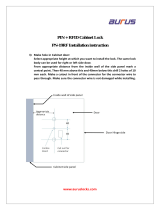
04_safety information
safety information
WARNING
These warning signs are here to prevent injury to you
and others.Please follow them explicitly.After reading
this section, keep it in a safe place for future reference.
• This refrigerator must be properly installed and located
in accordance with the manual before it is used.
• Use this appliance only for its intended purpose as
described in this user manual.
• We strongly recommend that any servicing be
performed by a qualified individual.
• R600a/R134a can be used as a refrigerant. Check the
compressor label or the circuit diagram on the rear of
the appliance to see which refrigerant is used for the
refrigerator
• In case of R600a refrigerant, this gas is natural
gas with high environmental compatibility that is,
however, also combustible. When transporting and
installing the appliance, care should be taken to
ensure that no parts of the refrigerating circuit are
damaged.
• Refrigerant squirting out of the pipes could ignite
or cause an eye injury. If a leak is detected, avoid
any naked flames or potential sources of ignition
and air the room in which the appliance is standing
for several minutes.
• In order to avoid the creation of a flammable gas-air
mixture if a leak in the refrigerating circuit occurs, the
size of the room in which the appliance may be sited
depends on the amount of refrigerant used.
• The room must be 1m³ in size for every 8g of R600a
refrigerant inside the appliance.
• Never start up an appliance showing any signs of
damage. If in doubt, consult your dealer.






















